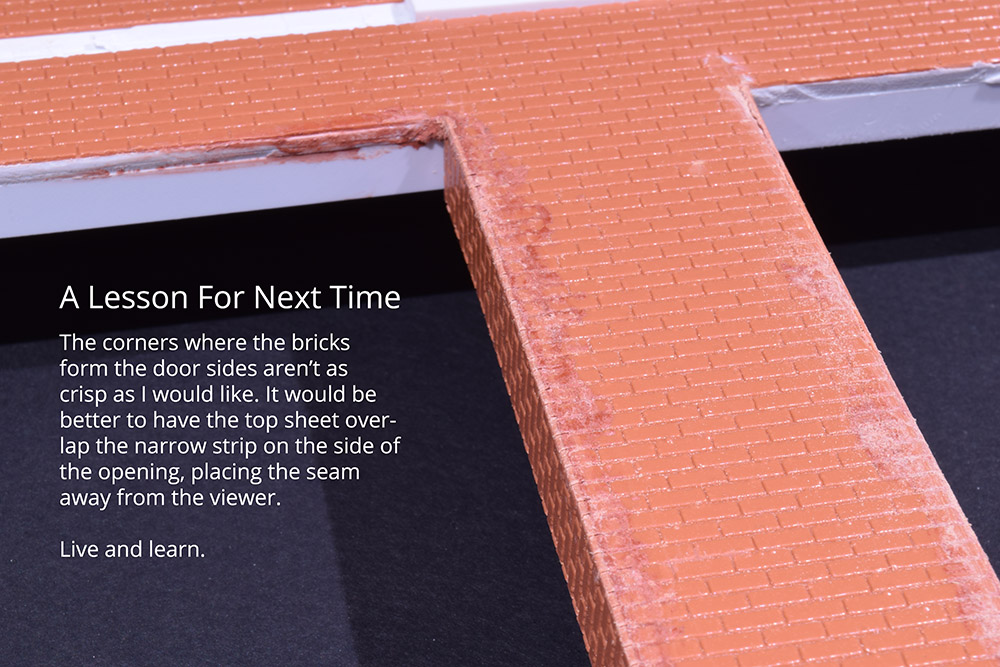I don’t doubt that this book represents a massive investment of your life. How has it influenced your relationship with modelmaking?
Chris Mears posed this question in a recent email exchange about my work on Tony Sisson’s new book. It’s an interesting question.
To put it in context, I spent a year editing the manuscript and laying out the book. These are two separate tasks that require different mindsets. By the time the actual book was in my hands, I am very familiar with the material and, strange as this may sound, seeing the finished book is almost an anticlimax. At least for me it is because I’ve mentally and emotionally moved on to the next project.
Addressing Chris’s question though, such a prolonged and deep exposure to one person’s work does have an impact.
Tony and I approach the craft the same way. We are our own worst critics and strive to improve our skill-set with each model. He has been doing this far longer than I. Tony brings a mechanical/machinists background to his work that I don’t have. He recently told me he was running a lathe when he was a teenager, whereas I barely knew what a lathe was at that age.
Because of the workload the book required, I haven’t spent time at my work bench in months. Just this week I returned to the warehouse build for my 13th and North E cameo layout. After such a long absence, I had to reacquaint myself with the project and settle into the mindset of working with my hands again. I admit the first steps felt clumsy and I hesitated a lot. In a statement that will strike many of you as weird, I could hear Tony’s admonitions in my head.
My greatest barrier to better modeling is my own impatience and tendency to rush through the work. I’m preparing the loading door openings for installation of the roll up doors. I added styrene filler strips around the back of each opening to mimic the thickness of the brick wall and then added strips of brick sheet for the returns. The focus here is aligning the mortar lines as each course turns the corner and to be certain that a full brick on the front wall has a corresponding half brick profile on the return.
It would be easy to just slop the pieces on and call it done but speed isn’t my objective here. Doing work I am proud of and can look back upon with satisfaction is the goal.

There is a segment in the book that illustrates this. On page 24 of the print version, Tony speaks about the trials of making a riveted strip for the radiator core grille work. It’s a tiny part that took him four tries before he got one that met his standards. Why bother so much with such a minor detail?
To begin, it’s in a highly visible location on the roof of the engine but more importantly, because he cares. He has standards that are meaningful to him and working to those standards nourishes him. And that, is the greatest lesson I learned from my time with this book. A lesson I want to apply to my own work.
A book like Tony’s is a gateway to his world and a conversation with the reader. In the best of circumstances, it’s a bridge that connects the two. I see model making as a gateway to experiences that I wouldn’t have otherwise. Experiences that are not only enjoyable but that stretch me as an individual. This isn’t the conversation we’re accustomed to but perhaps it’s one we should have more often.
Regards,
Mike
In terms of helping others to understand what makes this book so different, this blog post stands as a wonderfully strong example. I expect a lot of people will see the book and think that it’s great but then regret that they don’t model Conrail, or don’t need a model of an SW1500, or do but don’t work in HO scale so the book isn’t relevant. I think it’s neat that you’ve taken lessons learned from the fabrication of a detail part for a diesel and applied them to a model of a large brick building in O scale – just one example of exactly what the book is really about. The biggest takeaway I get from the book is the reminder about how I want to work. It reminds me that I could do better work if I just gave myself a chance to (1) slow the ___ down and (2) learn from what I’ve just done: having done it, is it the way I’d like it to be?
Bridging back to your layout. The creation of a complete model railway demands different types of inspiration to drive progress. First the inspiration to embark on this particular journey in the first place and then further inspiration, of a different nature, to complete the component tasks that are a part of the execution of the plan. It’s easy to spark the interest in the idea in the first place but to keep that alive we depend on those different relationships. Creating the shadowbox layout was the product of one style of inspiration but moving through the brick factory draws on this different inspiration. In terms of exploring the journey this craft entails, perhaps these are the new stories to share?
Chris